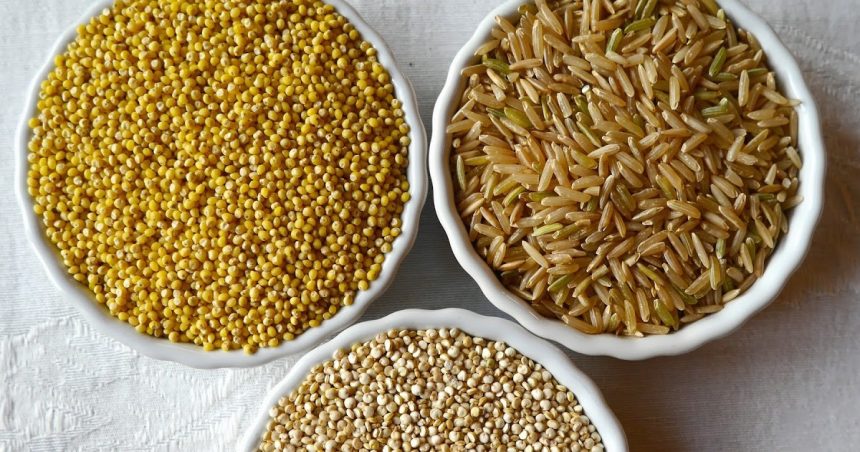Good Carbs , Bad Carbs (Millet & Brown Rice)
Most people are unclear about carbohydrates also known as carbs. It is essential to eat carbs from healthy food than to pursue a diet or constantly checking the number of grams of carb intake.
Carbs get a contrary rap on the grounds that such a significant number of individuals go after the wrong ones such as refined starch in white bread, sweets, treats, sugary oats, and a wide range of different treats and beverages. The most important thing is that the type of carbohydrate you pick to consume because some sources are better for health than others. Counting the number of carbs in a particular diet is less important than the type of carbohydrate you choose to consume.
Whole grains are one of the most important aspects to add to a healthy diet. As a matter of fact, if you’re between the ages of 30s to 60s, chances are you may not be getting all 3.5 to 7 servings of carbs the Whole Grain Council recommends. This deficiencies can be covered with this types of grains that are packed with most of the healthy carbs you are supposed to consume: The brown rice and Ragi, also known as millet.
Millet is technically a seed, but it is usually classified as a grain from a culinary perspective. It is gluten-free and is the most alkaline of all grains. Millet has been used to treat candida yeast overgrowth, and it helps to reduce sugar cravings. Millet has the highest amount of protein among other grains (15%) and is rich in B vitamins, iron, magnesium and potassium. Millet has more fiber than brown rice and it a is a wise choice to maintain a healthy heart, which goes about as a cofactor for more than 300 enzymes. In fact, recent studies have suggested that eating millet is linked to protecting against atherosclerosis, ischemic stroke, diabetes, insulin resistance, and obesity.
The beloved super food that had its own year dedicated to it in 2013, is actually a pseudo-grain. That’s because it’s not technically a grass, which covers grains like wheat and rice. Ragi is known for its protein content which is 8% of your daily recommended value, so it’s a good replacement to any rice-based dish. While millet does not contain gluten, however it has goitrogens that suppress thyroid activity and can lead to goiter. This condition involves enlargement of this very important gland which resides in the throat.
Rice as an oat grain, is the most generally consumed staple food for a vast part of the world’s human population, especially in Asia. It is the horticultural item with the third-most highest worldwide production, after sugarcane and maize. Rice is the predominant dietary energy source and provides 20% of dietary energy supply for half of the world’s population. However, If given the choice between white and brown rice, go for the brown. It’s higher in vitamin B6 and fiber. It also has less iron compared to most other grains.
Even though brown rice isn’t as nutritious as millet, it is a tasty grain that has numerous health advantages. For instance, it is brimming with B nutrients, iron, nutrient E, amino acids and gives complex carbs, which gives the body adequate amount of energy. It also has a fair amount of protein (10%) and is also gluten-free, just as millet. The utilization of brown rice has been connected to decreasing mental depression and compose the nervous system. It likewise reduces cholesterol through a compound it contains called, oryzanol.
Adding these kinds of good carbs into your diet can help prevent health problems like heart disease, diabetes, colon cancer, and possibly asthma and Alzheimer’s. On the other hand, eating too many refined carbs is linked to negative outcomes, like a higher risk of ticker trouble. So, if you’ve never tried millet before, we suggest you choose the half and half option so that you can enjoy the many benefits and flavor of these two healthy “grains” found on liv On products, various ranges of Ragi and Brown Rice dishes you could explore to satisfy your taste buds.


Leave a Reply